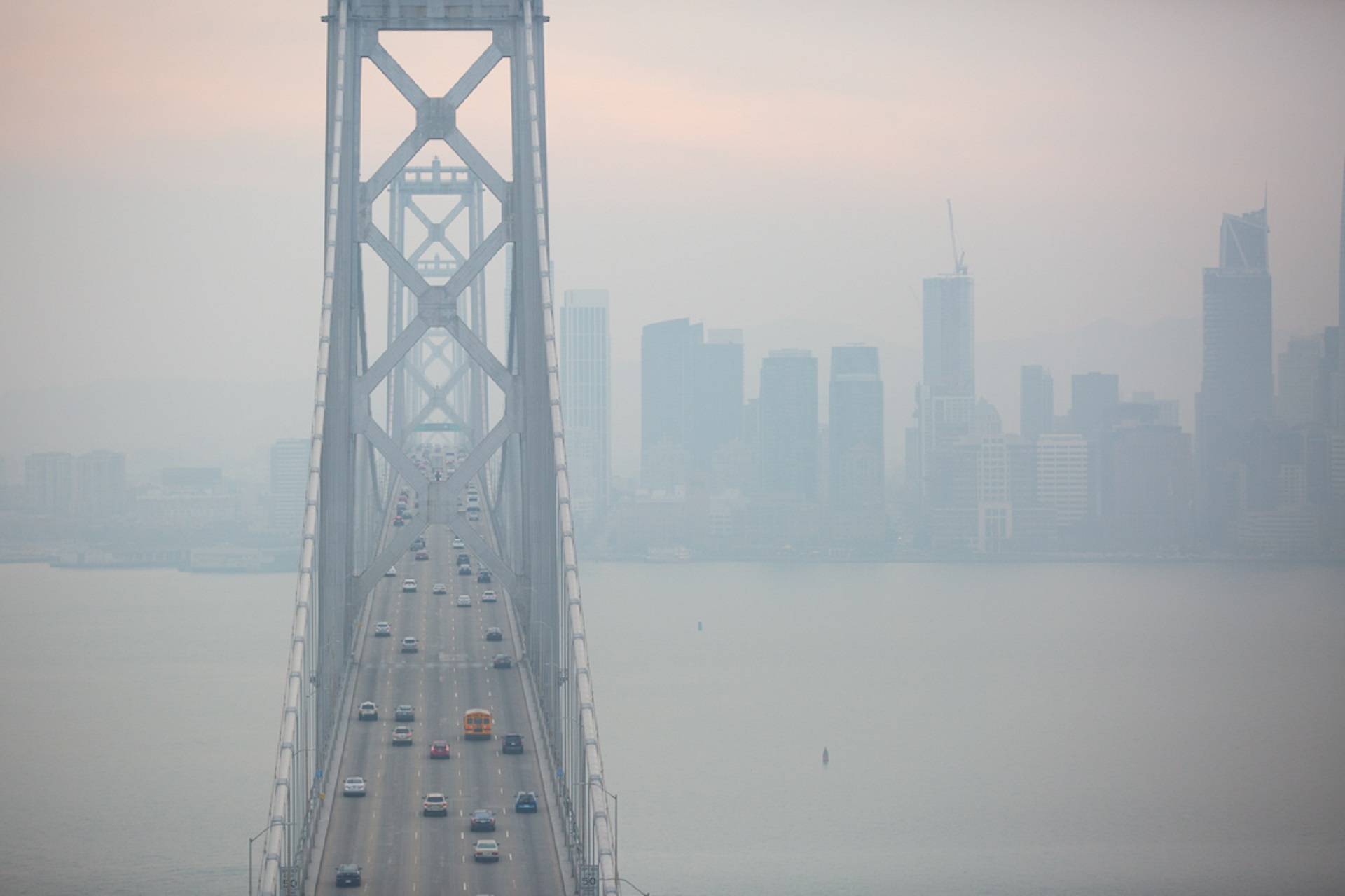L
ast month's Camp Fire was a record-breaker: the deadliest and most destructive wildfire California has ever seen.
The blaze killed 86 people in and around the town of Paradise in Butte County and destroyed almost 14,000 homes.
But data from Bay Area air regulators confirms that the smoke from the 153,000-acre fire made history, too.
For nearly two weeks straight, much of the Bay Area, which sits about 150 miles southwest of Paradise, was blanketed in a thick layer of smoke.
From Nov. 8 to Nov. 20, the region was choked by dangerously high levels of fine particulate matter, ranking among the worst periods of hazardous smoke since the Bay Area Air Quality Management District began keeping such records in 1999. All of the district's 17 monitoring stations — spread through eight Bay Area counties — detected high concentrations of the pollutant.
According to the district, six of its 10 worst days for fine particulate matter, known as PM2.5, occurred during that span. PM2.5 includes inhalable bits of soot, metal and organic compounds no more than 2.5 microns in diameter, or about 30 times smaller than the width of a human hair, according to the Environmental Protection Agency.
Three others days included in the "worst 10" for PM2.5 happened during last year's Tubbs Fire in the North Bay.
"Every site was impacted with high concentrations, and those sites were all impacted for several days," said Charles Knoderer, an air quality forecaster at the district.
Each of the district's 17 monitoring stations recorded 24-hour average PM2.5 concentrations that significantly exceeded the federal standard of 35 micrograms per cubic meter, the agency's data shows. The PM2.5 level in the Bay Area is usually under 9 micrograms.
"All of these numbers are way, way, way above that," Knoderer said, noting he had never seen such high levels for so many days in a row in the Bay Area.
For instance, the district's station in Vallejo detected a 24-hour PM2.5 average concentration of 197 micrograms per cubic meter on Nov. 16, the day the smoke was the worst this year. The Air Quality Index for PM2.5 in Vallejo that day — calculated using the concentration — was 247.
"This data, you'd see more commonly in a place like India or in China," said Knoderer.
The Vallejo reading was the highest among 11 Bay Area sites that recorded daily PM2.5 AQIs above 200 on Nov. 16 — in the EPA's "very unhealthy" category.
By contrast, the PM2.5 AQI on Monday ranged from 10 in Concord to 40 in San Pablo.
Agency officials say they hope to learn more about what was in the air during that period by conducting a detailed analysis in the coming months, including lab tests on filters that captured some of the air to see exactly what was in the smoke.
During those two weeks of foul air quality in November, health officials warned people to stay indoors, school district canceled classes and residents flocked to stores to buy air masks.
It was a repeat of October 2017, during the North Bay fires. That's when the air district recorded its highest daily PM2.5 level ever.
The record: The daily AQI for a monitoring station in Napa on Oct. 13, 2017, was 249.
Knoderer points out that the the smoke's effect on the region during the North Bay fires was more isolated than last month's occurrence.
"This year it was hitting every site," he said.
One reason that smoke from the Camp Fire was especially bad was because of the time of year. In November, the shorter days don't allow for cold and warm air to mix, like they would earlier in the season, Knoderer said.
Smoke from the blaze got trapped in a layer of cold air close to the ground.
Any AQI over 200 is considered harmful to everyone — not just people with compromised respiratory systems, according to John Balmes, a professor of medicine and environmental health at UCSF and UC Berkeley.
The index surpassed 200 for at least one Bay Area location on five separate days during the Camp Fire, compared with two days in October 2017 during the North Bay fires.
"In a polluted city like Delhi, it's like that all the time," said Balmes, who reviewed the air district data for KQED.
Chronic exposure to that level of poor air quality is harmful to everyone's health, he said, noting that while healthy people may have experienced eye and nose irritation, scratchy throats and coughs, they most likely won't have long-term effects from the smoke.
But people with asthma and heart disease, among other respiratory ailments, Balmes noted, can experience exacerbated conditions if they are exposed to such high levels of particulate matter over shorter amounts of time.

